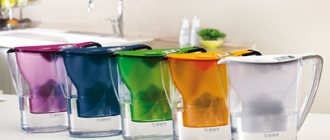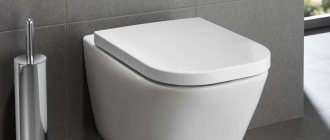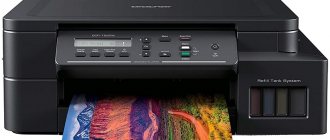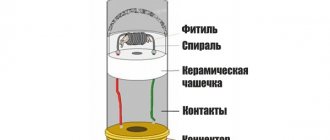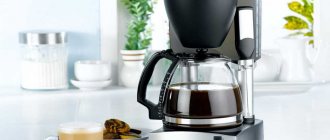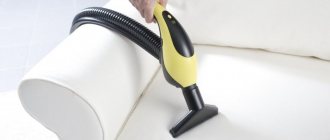If your home has problems with quality water, you cannot do without a special filter with reverse osmosis.
We present to your attention the rating of the most popular and affordable models, which have a large number of reviews.
We will also tell you how to choose the right filters and what to pay attention to when using them.
If you are in a hurry and want to immediately find out the best offers in each rating category from different online stores , you can familiarize yourself with the table and see the current prices on the Yandex.Market service by clicking on the “find out price” button in the table opposite the model.
Geyser Prestige
Geyser Prestige is a classic model of a household reverse osmosis system with a storage tank. When I say “classic”, I mean the interchangeability of filter cartridges. You can easily select SL10″ and InLine filter elements from other manufacturers for such equipment.
Available in 4 modifications: simple, with a mineralizer (M), with a pump (P), with a pump and mineralizer (PM). This approach allows us to cover most of the customer's needs. The basic model operates at a pressure of 3 atmospheres, the version with a pump – from 2.
By default it is equipped with a tank with a usable volume of 7 liters. If desired, it can be replaced with a more compact one, 5 or even 2 liters. The filter is installed under the sink, so sometimes the size of the tank is critical.
The base membrane (1812-50 GPD) produces up to 190 l/day. It can subsequently be replaced by increasing productivity to 285 (1812-75 GPD) or 380 (1812-100 GPD) l/day.
The principle of operation of such a filter
The principle of water purification using reverse osmosis is based on the fact that a concentrated aqueous solution is supplied under pressure into a container separated by a semi-permeable membrane. Water filtered through the membrane enters the second part of the container; mineral substances remain outside it and then go down the drain.
The filters consist of modules that are easily replaced during operation. Each of them has a certain service life.
Step-by-step water purification. Passing through all the modules, the water is purified of all impurities, including useful ones, so experts advise purchasing systems with mineralizers
The system design includes several filter cartridges with activated carbon and porous polypropylene inside. With their help, water is freed from solid particles and organic impurities. At the first stage, when passing through a polypropylene filter, water is freed from particles with a minimum size of 0.5 microns.
The second filter is a carbon filter, which removes organic and chemical impurities from the water, including petroleum products, pesticides, heavy metals and other substances. The last filter in front of the reverse osmosis membrane retains microscopic mechanical impurities, their size does not exceed 1 micron.
The main element in the system is a membrane, into which water flows under pressure after rough pre-treatment. Its pores, 0.0001 microns in size, do not let anything through except water molecules. When it passes through the post-filter, the final purification and stabilization of the water occurs.
Here the flow is divided into two parts: crystal clear water and a concentrated solution, which is discharged into the sewer system. Clean water that does not require boiling flows into a storage tank, and then through a separate tap to the consumer.
Only a reverse osmosis system can provide ideal fine water purification, but the result of their work depends on many factors
The system is designed in such a way that as purified water is consumed, its reserves are replenished automatically. From the inside, the tank consists of 2 chambers, with a silicone membrane serving as a partition between them. Water enters the upper compartment, and compressed air is located in the lower compartment.
As the volume of water decreases, the membrane expands, maintaining pressure until the water is completely drained. The air pressure can be adjusted via a nipple installed on the side of the lower chamber.
For individual selection of drinking water, a special tap is installed into the countertop or kitchen sink, independent of the flow used for other purposes.
Some manufacturers provide their products with additional functionality:
- mineralizer , which introduces useful microelements into the water that the membrane did not miss;
- ultraviolet lamp , which kills harmful microbes;
- a structurer that rids water of “negative” information.
Water consumption during such cleaning cannot be called economical - when receiving 1 liter of potable water, 3 liters of dirty water go down the drain. For the system to operate, pressure is required in the range of 2-6 bar, so sometimes it needs to be increased using a pump or decreased using a reducer.
Image gallery
Photo from
Reverse osmosis system membrane filter
Structure of the filter membrane
Module for installing a membrane filter
Hole at the bottom of the module for the membrane filter
Atoll A-550 STD (A-560E)
Another classic, but made of the best plastic and on a steel frame. It also differs from its analogues in that American Pentek filter elements are used as pre-filters. This is, in a way, a sign of quality, because the cartridges of this brand are considered one of the best.
In addition to the standard model, there are modifications with a pump (A-550p) and a mineralizer (A-550m).
The membrane is a proprietary element 1812-50 with a nominal capacity of 120 liters per day from DOW Chemical. The system is equipped with one large tank with a useful volume of 12 liters. Due to its massive size, I recommend this model to those who have enough space under the sink, or do not plan to use it for anything else.
OMOIKIRI Pure Drop 2.1.4
In eighth place is a stylish and effective filter from the Japanese company Omoikiri. The OMOIKIRI Pure Drop 2.1.4 filter has the most compact dimensions among reverse osmosis filters. It takes up minimal space under the sink and is suitable for small kitchens and studio apartments.
Despite its size, OMOIKIRI Pure Drop 2.1.4 has incredibly high performance: as much as 220 ml/min.
The filter has 3 stages of cleaning :
- Preliminary mechanical cleaning removes contaminants larger than 1 micron and increases the service life of the membrane.
- The NanoTube reverse osmosis membrane will remove remaining mechanical impurities, salts, heavy metals, bacteria, viruses and other impurities from the water.
- The final stage is the saturation of the water with beneficial salts in the mineralizer.
The number of cleaning stages is a clear disadvantage of the filter - there are only 3 of them. The system is equipped with only one pre-cleaning cartridge. This means that the membrane will quickly become clogged, and the cost of the membrane itself is 6,000 rubles. The cartridges are not interchangeable; analogues and universal ones, unfortunately, will not work.
the OMOIKIRI Pure Drop 2.1.4 water filter is its ease of use . Replace modules in less than a minute without additional tools.
We liked:
- High performance
- Compact dimensions
- Availability of a mineralizer
- Outlet water quality
We didn't like:
- Only 3 cleaning stages
- High price
- Expensive service
- Doesn't handle hard water well
Best deals:
| Yandex Market | RUB 16,388 | To the store | |
| e-catalog | 15,300 rub. | To the store |
*Prices are current as of 05/24/2021
Aquaphor DWM-101s Morion
Aquaphor offers an interesting technical solution. DWM-101s Morion combines the use of disposable modules, a water-water tank and sophisticated automation. The design has only 4 cartridges, and the last one works as a post-filter and mineralizer. All of them are vendor lock-in, i.e. replacement only with products from Aquaphor.
With a major focus on ease of maintenance, all cartridges can be replaced within 1 minute without the use of tools. The presence of a 5-liter water-water tank is designed to ensure the system operates at a pressure of 2 atmospheres, while most other reverse osmosis filters operate at 3 atmospheres. and higher. The tank is already built into the body, so the model is compact: 371x190x420 mm. A sophisticated mechanical automation system is responsible for smooth operation, so you always need to be prepared for surprises on its part.
It's important not to get confused. Until 2015, Aquaphor produced DWM-101 systems. This is exactly what is shown in the next video.
The only difference from the current version is the design of the membrane block. In the old K50 module, the drainage was diverted through a separate hole at the bottom. The appearance was spoiled by the “extra” tube. Now the filter is equipped with a K50S module with a corresponding mounting socket. Therefore, membranes from the old model do not fit the new ones, and vice versa.
Why such a difference in dimensions, productivity and water consumption?
Aquaphor was able to achieve such a difference in size, speed and efficiency thanks to its own development - a water-water storage tank.
Here is a video that explains and shows in detail the structure of this system: Briefly about the essence: in a conventional reverse osmosis filter, when the tank is completely filled with water, a third of the container remains empty - it is filled with air. That's why these tanks are so big. As clean water accumulates, the pressure in a conventional storage tank increases, causing the filtration rate to become lower and the volume of water discharged into the drainage to increase. In the case of a water-water tank of the Aquaphor Morion system, water is drained from the control cavity without creating resistance, and the filling rate of the tank remains constantly high. This results in high productivity and economical water consumption for drainage. And, by the way, another advantage of the Aquaphor development is relevant for residents of old houses: according to the instructions, the Morion filter can operate at a pressure of 0.2 MPa (about 2 atmospheres), while most reverse osmosis systems require 3 atmospheres or more. For the Barrier involved in the comparison, for example, the operating manual indicates an operating pressure of 3.5 to 7 atmospheres.
Cartridge life
Let's return to the comparison. How long will the cartridges in the Aquaphor and Barrier filters last, and how often do they need to be changed?
“Aquaphor” on its website provides the following figures (based on a family of 3 people): prefiltration modules K5 (315 rubles), K2 (540 rubles) need to be changed twice a year. Post-filtration module K7M (540 rubles) - once a year. The module with a membrane (K50S for 1,895 rubles) needs to be changed every year and a half. Total total expenses per year will be (540 rubles + 315 rubles) * 2 + 540 rubles + 1,895 rubles / 1.5 = 3,513 rubles.
The Barrier website indicates a filter resource of 5 thousand liters, and additionally indicates that for a family of 3 people the cartridges will have to be changed every 160 days (365/160 = 2.3 times a year).
A complete set of 5 cartridges costs 3,190 rubles, respectively, the annual costs will be 3,190 * 2.3 = 7,334 rubles.
A more attentive user will study the catalog on the Barrier website and find that a separate module with a membrane for 2,320 rubles has a service life of 340 days - a little less than a year.
That is, if you don’t fall for the trick of imposing a complete set, but buy modules separately, the annual expenses of a family of three will be (99 + 490 + 139 + 599) * 2.3 + 2,320 = 5,372 rubles.
Naturally, the resource figures indicated by manufacturers are conditional and depend on many factors, for example, pressure and water quality. But the proportion, other things being equal, should remain the same: Aquaphor is at least one and a half times more economical, and its module with a membrane lasts 1.5 times longer than the Barrier.
Why does Aquaphor’s membrane last for a year and a half, while Barrier’s lasts less than a year? Let's take a guess. As mentioned above, a reverse osmosis membrane is a sensitive thing. An important role in the service life of the membrane is played by the quality of the water supplied to this membrane.
Both filters have polypropylene modules for mechanical water purification from sand and rust - they remove the largest particles of pollutants from the water. They are followed by sorption modules - they are similar in design and content to the sorption filter modules that were compared in the previous test. The Barrier has regular granular activated carbon inside its sorption modules. In the sorbent of the Barrier cartridge, water under pressure will be able to flush the channels through which it will pass quickly and without being properly cleaned. That is, over time, water with large particles of pollutants may begin to get onto the Barrier membrane, which negatively affects its service life and the quality of water purification.
Remember this diagram from my comparison test? In the case of Aquaphor, the channel effect cannot be formed due to the use of the company’s own development, a module manufactured using a special technology: granular coal is “sintered” with Aqualen fiber, resulting in a single block. In principle, channels do not form in such material. Accordingly, the membrane in the Aquaphora filter receives cleaner water and lasts longer.
Easy to replace cartridges
There's not much to compare. Replacing modules in the Aquaphor filter is simple: the cartridges are unscrewed like light bulbs. There is no need to come into contact with the contents of the flasks; there is no need to rinse anything.
Video example:
At the Barrier you will have to work with the key and wash the flasks. The installation process is in the video at the link below:
I would especially like to note that when working with cartridges that have been used for a long time, you need to be careful. All cut off bacteria and microbes can remain inside the replaceable module and continue to multiply there. They will not get into the water through the membrane, but if you climb inside the cartridge, be extremely careful.
In general, Aquaphor is decidedly simpler in terms of maintenance: modules can be changed “with a click”, no tools are required. And there is also no need to come into contact with the contents of the cartridges, which is even more important.
Barrier Profi Osmo 100
Don’t be surprised, but we have another standard model – now from Barrier. The latest current line of Profi Osmo with an index of 100, which indicates the use of a membrane with a capacity of up to 380 liters per day (100 gallons) as the default filter element. Those. where 1812-50 is usually installed, here 1812-100. The performance gain is approximately 2 times.
The model is available in versions with a pump (Boost), a mineralizer (M), and both (Boost M). All elements are attached to a durable steel frame.
The storage tank holds up to 4-5 liters of purified water. The useful volume, as in other systems of this type, directly depends on the pressure in the water supply: the higher, the better the potential of the capacity is realized.
Watch a short video about installing Barrier Profi Osmo to get an idea of this filter.
The best Aquaphor filters with reverse osmosis.
Aquaphor Morion
Compact, inexpensive filter. The kit includes a 5-liter storage tank, two pre-treatment filters, one fine filter, a membrane filter, a mineralizer, two taps, connecting tubes, fittings, and a drain coupling. The elements are installed on a single platform. Aquaphor "Morion" is easy to install, connect, and maintain. Works at low pressure in the water supply. Ideal for a family of 2-3 people.
Pros:
- Compact size.
- High-quality materials are used in production.
- Sufficient supply of filtered water.
- High filtration speed.
- Mineralizer.
Minuses:
- High price per 1 liter of filtered water.
- Large waste of water.
- Increased filter consumption.
- Crane design.
- The quick-release connections are not tight.
- Work in a narrow pressure range in the water supply system.
- Most of the claimed characteristics do not correspond to the facts.
Aquaphor OSMO 50
It features five levels of cleaning and an increased volume of the storage tank. Filtration is provided by two mechanical polypropylene cartridges, a membrane, and a universal module B510-03. A carbon post-filter is installed at the outlet. The system is compact, all-mounted. The tank is installed separately. Satisfies the daily need of a family of 4-5 people for drinking water.
Pros:
- Great performance.
- Compact sizes.
- Possibility to turn off the storage tank.
- Materials.
- Availability of additional filtration stages.
- High quality water.
Minuses:
- The ratio of filtered water to used water is 1:10.
- Formation of condensation on the surface of the system.
- Non-standard dimensions of the pre-filter gasket.
- Connection gaskets are prone to leaks.
- Noise during operation.
Geyser Allegro
Allegro is a continuation of the successful Prestige line, but with some modifications. The manufacturer has focused on reducing the number of connections, which, logically, should reduce the risk of potential leaks. Therefore, the collector to which the prefilter flasks are attached is cast and made of plastic. There are versions on sale with a pump, a mineralizer, and the most complete one – with everything together. The kit includes a tank for 5-7 liters of purified water.
Previously, this model stood out with a transparent storage tank. There was a removable bag inside, allowing it to be changed as needed when microbial growth on its inner walls became apparent. But Geyser refused such a decision. Apparently something went wrong. For example, due to daylight, more germs developed inside than in a regular tank. Watch the video and you will understand what it looked like originally.
Not all membranes are equally useful?
It turns out that none of the manufacturers of household filters produces reverse osmosis membranes on their own; they are ordered from foreign suppliers. There are more expensive membranes, there are cheaper ones, but there is almost no global difference in terms of water purification efficiency between different models of reverse osmosis filters. That is, the colorful experiments with different solutions that we carried out during the previous test will not give noticeable results when comparing reverse osmosis filters.
But do reverse osmosis filters really differ only in names and price tags? Practice has shown that no. Having studied reviews on Yandex.Market, I discovered several important criteria for comparing reverse osmosis systems:
- Dimensions. Many people have small kitchens, small sinks, and there is simply not enough space for a filter with a tank under the sink. Or there is enough, but I want to place something else there besides a filter.
- Cleaning speed. Let's say you need more water than is in the storage tank - you will have to wait a long time for it to fill up again.
- Water consumption. Of course, we don’t live in Europe, and tap water costs pennies. But if it is possible to buy a filter with a drainage to purified water ratio of 5 to 1 instead of 10 to 1, why not save money? Moreover, water in almost all new houses is now metered, and, as you know, a penny saves a ruble. Let me remind you that drainage water first consumes the resource of the pre-treatment modules. This directly impacts point #4.
- Cartridge life. Of course, I want the cartridges to last longer, because they are not cheap - from 800 to 1,800 rubles, depending on the manufacturer and type of cartridges.
- Easy to maintain. Calling a specialist once to install the filter is all right. But calling a technician to replace modules or bothering with the key yourself is no longer very convenient. It’s more convenient when you can do everything with your bare hands: simply and quickly.
- Based on these criteria, we decided to compare reverse osmosis filters.
New water Expert Osmos MO530
This model will appeal to those who value compactness. The thickness of the main unit of the Expert Osmos MO530 filter is only 8.5 cm. It can be placed not only under the sink, but also above it or somewhere on the countertop. At the same time, it contains full 4 stages of purification with reverse osmosis and mineralization. All InLine cartridges can be changed in minutes. If necessary, they can be replaced with analogues from other manufacturers. A separate storage tank holds up to 7 liters of purified water.
As you will see from the video below, the MO530 used to come with a transparent storage tank. For the same reasons as in the case of Geyser Allegro, it was abandoned.
10. K-OSMOS BARRIER
In last place is the K-OSMOS from the domestic brand Barrier . This filter does an excellent job of purifying tap water from various organic and inorganic pollutants.
The K-OSMOS barrier has 4 stages of water purification:
- The pre-filter removes particles larger than 10 microns;
- A sorption filter made of activated coconut carbon removes active chlorine, organic and organochlorine compounds;
- The reverse osmosis membrane removes all remaining contaminants;
- At the final stage, the water passes through a post-filter made of activated carbon containing silver for additional disinfection and elimination of unpleasant taste and odor.
The resulting water is clean, healthy and pleasant to the taste.
The system is equipped with a large 8 liter tank . At the same time, oddly enough, the system is quite compact and can easily fit into almost any sink.
The system is easy to maintain. You can easily install a filter and replace cartridges without calling a plumber. The filter is equipped with convenient latches and a tray for draining water. Barrier K-OSMOS filter uses modern quick-release cartridges that are easy to replace yourself. The cartridges are interchangeable: you can use both original Barrier cartridges and analogues.
Unfortunately, the filter does not have high performance: the membrane is capable of passing only 0.144 liters per hour.
Another disadvantage is the significant drainage of water into the drainage: for 1 liter of clean water, up to 5 liters can go into the sewer. Not the most economical solution.
In addition, buyers often complain about the noisy operation of the system.
We liked:
- Outlet water quality
- Ease of maintenance
We didn't like:
- Poor performance
- A lot of water goes into the drainage
- No mineralizer
Best deals:
| Yandex Market | 13,500 rub. | To the store | |
| lunda.ru | 13,500 rub. | To the store |
*Prices are current as of 05/24/2021
Geyser Prestige 2
If your filter requirements are ultra-compact and affordable, then Geyser Prestige 2 is one of the few options. There will be a sacrifice in performance because the base 2-speed model comes without a tank. There is a modification with a 2-liter water tank and a post-filter.
The base model is equipped with a 100 gallon membrane. It is this that allows this reverse osmosis to be used as direct-flow osmosis. Depending on the pressure, the filter can deliver up to 200 ml per minute. This is not very convenient, but in some cases it is a good option.
The following video provides a short overview of the modification with a tank.
To be fair, I note that anyone can assemble such a system “on their knees” from components from any manufacturer. You just need an InLine cartridge with activated carbon (if the water is chlorinated) or polypropylene foam (if not chlorinated), a housing with a membrane, a plastic liner, a tap, a drain clamp and a tee tap. By the way, in this case you can even install a membrane with a higher capacity, up to 400 gallons. It will cost more, but the cleaning speed will increase 4 times.
What types of products are there?
The main structural element of the device is a special cartridge. Depending on its reliability and characteristics, the service life of the product itself depends. The following varieties are distinguished:
| View | Description |
| Coal | They work on pressed (activated) carbon. Eliminate inorganic and organic components, affect the color of the liquid, and remove unpleasant odors. |
| Mechanical | The composition includes polypropylene. The main purpose is to remove mechanical suspensions, rust and sand. |
| Iron removal | The presence of two backfills, one of which is calcite, helps improve pH, remove hydrogen sulfide, and eliminate metallic odor and taste. |
| Softening | The composition contains Na-cationic resin. Purifies water from heavy metals. |
The best manufacturers produce the following types of popular filter models:
- Standing separately. It must be connected to the water supply system using a flexible hose. The maximum number of filtration stages is two: activated carbon and polypropylene. A 10-inch cartridge is enough to enjoy pure water for six months. On average, it is designed for 4 tons of liquid. Can be installed both on the sink and on the wall. Popular companies produce models with an indicator warning that it is time to replace the cartridge. Replacement occurs once every 4–5 months. It is possible to enable or disable filtering. In this case, the hose must be disconnected.
- Attachment on the crane. Has a carbon cartridge. Withstands a flow of no more than 2-3 liters per hour. Can't handle large volumes.
- Filter – jug. The best one for a summer residence. It is distinguished by reasonable price and ease of use. Operates on a carbon cartridge. The maximum volume of water for filtration is 500 liters. The following varieties are produced: specialized and universal. What should you pay attention to? The former have additional options that allow you to remove iron, soften the liquid, and add fluoride.
- Mainline. Its place is the main pipe through which water is supplied to apartments and non-residential premises. Can be installed on both hot and cold water. We are ready to make water drinkable and protect plumbing fixtures from premature failure. Extends the life of household appliances connected to the central water supply, mainly washing machines and dishwashers.
- Filters for water purification for washing. Connection point - water supply. They are characterized by efficiency and productivity. The composition contains three cartridges. The filtration method can be changed by installing the required cartridge. The first stage of cleaning is always mechanical. Able to rid the liquid of any contaminants, regardless of the flow rate.
- Purifair (cooler). Stationary water purification devices are considered the best-selling. They are also able to heat or cool water to the desired temperature. They differ in modification, parameters, and functionality. Installed in offices and manufacturing plants.
- Pre-filter. Attached to a water pipe. Eliminates mechanical debris, protecting rubble equipment. The composition contains a fine mesh. New items are produced with protection against water hammer. Requires periodic washing.
- Tourist. Taken on trips, business trips, hikes, trips. It copes with its task – filtering liquid from any source – with flying colors. Can be used in difficult conditions.
- Nano filter. Nano technology is used in their production. The manufacturer equipped his brainchild with a semi-permeable membrane with pores whose dimensions are similar to those of a water molecule. Able to retain all impurities.
Each system has both its pros and cons.
Econic Osmos Stream
New water loves modular cartridges, which can be seen from the abundance of models of systems with inLine filter elements. They are easy to change, and if necessary, it is not a problem to replace them with analogues from other manufacturers. But in the Econic Osmos Stream system there was also a place for a special component in the form of a high-performance membrane of Japanese origin. It is capable of delivering up to 0.9 l/min at a water supply pressure of 5 atm, and at 8 atm. – all 1.5 l/min. The membrane cleans water so well that the concentrate and permeate are approximately the same. This is very cool!
In addition to the basic model OD310, there is OD320 - with a mineralizer and OD360 - with a pump and mineralizer. All of them are direct-flow, providing high quality cleaning at an enviable speed. The only thing is that the membrane for such systems costs almost the same as the entire kit.
Rating of popular models with convenient water connection
Prio New Water Start Osmos Stream OU580
A convenient option that is installed under the sink. The product has good functionality and an optimal price, so almost everyone can buy this product. There are five stages of purification, which indicates the quality of filtration.
But besides this, the water is saturated with minerals and substances beneficial to the body. The capacity of the storage tank is 7.5 liters. Porosity is 1 micron. There is purification from free chlorine, which is already an advantage. Connecting to the water supply takes a minimum of time; if desired, a person can carry out this operation independently.
The average cost is 12,580 rubles.
Prio New Water Start Osmos Stream OU580
Advantages:
- Reliability;
- High quality manufacturing;
- Light weight;
- Easy installation under the sink;
- Dozens of positive reviews;
- Free chlorine removal.
Flaws:
- Not found.
Geyser Allegro M with transparent tank
As the name suggests, the main advantage of this element is the presence of a transparent tank. The filter is installed under the sink, which is a convenient solution for most users. Moreover, after installation the product does not take up much space. Cleaning is carried out with a special carbon filter, which retains most of the harmful components.
The package is quite good, as it contains everything necessary for quick installation. A separate faucet is easily installed in the sink. The capacity of the storage tank is 12 liters. The only drawback is that compared to the previous copy, the porosity here is 5 microns. The output pressure is 5-6 atm.
The average price is 8,440 rubles.
Geyser Allegro M with transparent tank
Advantages:
- Low price;
- Free installation available;
- There are no impurities;
- There is mineralization;
- Capacious tank;
- Transparent tank.
Flaws:
- There are no significant ones.
Ecosoft P'URE with mineralizer
A convenient option equipped with 6 stages of filtration, which allows you to get crystal clear water. The product is easy to connect; there are detailed instructions for this. The water will be safe even for babies. The main advantage of the design is performance, so it can be installed in a family of 5 people; there will be no problems with shortages.
The manufacturer himself reminds you to replace the filters, so a person does not have to think about when it needs to be changed, which is a convenient solution. Installation takes one hour. The product has a long warranty of 36 months.
The average cost is 9,950 rubles.
Ecosoft P'URE with mineralizer
Advantages:
- High-quality assembly, no leaks;
- Attractive appearance;
- Good filtration;
- There are no impurities;
- Porosity;
- Long warranty.
Flaws:
- Not found.
Aquaphor DWM-101S Morion
A good Russian option that not only purifies, but also thoroughly mineralizes water, making it beneficial for the whole body. The system includes several modules, so the water is purified before and after the membrane. Using reverse osmosis, all particles are removed and do not penetrate inside, and the mineralizer helps saturate the liquid.
The device can only operate in a water supply system where the pressure does not exceed 6.5 atm, but should not be less than 2 atm. It is important to comply with these requirements, otherwise the equipment will not be of any use. Water after purification does not carry any harmful bacteria or viruses, so it can be given even to infants and not be afraid that they will catch an infection. The filter can be installed both at home and in public places, it will be effective everywhere.
Sold at a price: from 9,985 rubles.
Aquaphor DWM-101S Morion
Advantages:
- High degree of water purification;
- There is no scale on the kettle;
- Convenient replacement;
- Easy installation;
- Mineralization;
- High-quality assembly;
- There are no leaks.
Flaws:
- Not found.
Aquaphor DWM-31
DWM-31 combines the advantages of classic systems with a tank and direct-flow filters. The main advantage of this model is the use of a storage tank without internal pressure chambers and other things. Thanks to the included cut-off device, you can use 5-20 liter bottles. But for convenience, the kit includes a neat jug with a usable volume of 2.5 liters. It can always be washed, which eliminates the need for post-filters. Plus it saves space under the sink. Plus you can put it in the refrigerator. Plus there is a conditioning module with healthy salts.
What about the cons? Vendor lock-in, as always. Aquaphor cartridges are suitable here, and nothing more. See how it works in a visual video from the manufacturer.
Atoll A-550 box
If you want to see a minimum of tubes, look towards the boxed versions. Such as Atoll A-550 box. In it, all filter elements and the tank are hidden inside a plastic case. 4 of the 5 cleaning stages are represented by Inline type cartridges, i.e. If necessary, they can be replaced with products of third-party brands. The 1812-50 membrane is housed in a standard housing and delivers up to 120 liters per day or about 80 ml per minute.
The filter size is 440x420x240 mm, so the tank inside is also small. It can hold a maximum of 4.6 liters of purified water. There are versions with a pump. Modifications of the A-575 box with a 1812-75 membrane are produced in the same case, i.e. 1.5 times more productive compared to the younger version. You can find versions with a mineralizer and a pump.
The main advantage of such solutions: there are no protruding tubes, everything is hidden by plastic. On the other hand, you overpay for this plastic. At your leisure, try to calculate how much this overpayment will cost you if you assemble a similar system, but without a box. Let's save your time: about half the cost of the kit is the box. Half, Karl!
Structure of the mineralizer cartridge
The main structural element consists of a special mineral fill, which is placed in a plastic (cheap models) or ceramic case (premium options). The main purpose of this element is to equalize pH and increase the content of mineral components. In standard systems, the mineralizer is installed in front of the drinking tap, immediately after a special post-filter. But sometimes there are models where these two elements are combined into one.
In most budget products, calcite is used as backfill. Most often, calcium carbonate is found in this form. But so that a person does not receive only this element, manufacturers add special magnesium cations, sulfides, chlorides, etc. This solution saturates the water with useful microelements.
You can learn more about the composition of the backfill by looking at the filter housing. There is all the necessary information about its quantity and the presence of auxiliary microelements.
Tips for choosing
As you can easily see, all systems are approximately the same: externally and in terms of cleaning quality. They may differ in design and ease of use, but the concept is the same everywhere. First, prefiltration to remove solid impurities and chlorine, then a reverse osmosis membrane to remove everything else, postfiltration to further purify the water after the tank, a mineralizer, etc. Read more about the sequence of cartridges in a separate article.
About the need to purchase
Reverse osmosis is really only needed in 3 cases:
- The water contains nitrates - compounds that turn into toxic nitrites in the stomach. Only reverse osmosis and special expensive ion exchange resins can remove nitrates;
- want to switch from bottled water to filtered water, because it’s more convenient and profitable. At the most rough estimates, clean water will cost half as much;
- Tired of scale in the kettle and the need to frequently change softening cartridges in the flow filter
If this doesn’t apply to you, you shouldn’t spend money on such a system - something simpler, like a flow-through or filter jug, will help.
About the number of cleaning stages
Usually 4-5 steps are enough to get good quality water. Is it possible to do less? Easily! Below is a small life hack that will help you save some money.
Control yourself. Don't pay for unnecessary steps - this will not improve the quality of water purification!
So you bought a classic system, for example, Geyser Prestige. You use it, but 6 months pass - it’s time to change the pre-filters and post-filters. At the same time, you know for sure that the source water is not chlorinated. This is easy to understand by the absence of a specific smell.
Then you can throw out the 2nd and 3rd cartridges, and replace only the 1st and post-filter. Yes, you heard right, 2 flasks will be empty. Simply because their presence in a particular case does not make sense. Prefiltration will only include mechanical cleaning from sand, rust, etc. impurities insoluble in water.
About the storage tank
Most often, household reverse osmosis systems are equipped with 1812-50 GPD membranes. Their maximum output is 190 liters per day or approximately 130 ml per minute. We don't have the patience to wait 10-15 minutes for the kettle to fill, so we came up with storage tanks. These are intermediate containers that always have a supply of purified water.
You need to understand that no matter how clean the water after the membrane is, in a closed container it is simply doomed to become a medium for the development of bacteria. Therefore, there is a carbon post-filter that purifies the water after the storage tank. Therefore, manufacturers do not recommend leaving the filter idle for a long time. The tank will become rotten and will have to be washed with bleach to disinfect it. But this is the most pessimistic scenario. If you follow the manufacturer's recommendations, you don't have to worry about poisoning, etc. things.
But I still recommend considering options without intermediate containers (Prestige-2 or Econic Osmos Stream) or those where these containers can be easily washed, for example, a jug like in Aquaphor DWM-31 . In some cases, you don’t even have to sacrifice the speed of supply of purified water!
About water pressure
The bigger, the better. It's better to measure before purchasing. You can contact plumbers, filter installers, or do it yourself by screwing a pressure gauge to a flexible liner or shower hose.
A pressure of 3.5 atmospheres will allow any filter to reach its nominal performance. However, there are models that work with less pressure. As a last resort, you can install a pressure booster pump.
What is extremely important: the higher the pressure, the less water is drained into the sewer!
About the mineralizer
According to SanPiN 2.1.4.1074-01, the pH value of drinking water should be in the range of 6-9 units. But after reverse osmosis it can sometimes be below 6, which can be felt by the changed taste: the water seems bitter. To avoid this, use a mineralizer. It usually contains crushed calcite or dolomite - bad, but soluble minerals of natural origin.
Its use will only be noticeable to those who plan to drink raw purified water. For tea and coffee, a mineralizer does not make sense. Plus, you need to take into account that only the first portions of water will contain a noticeable amount of salts, because it was inside the mineralizer for some time, all the rest will contain much less due to the poor solubility of the filling.
About replacing cartridges
As practice shows, during the first replacement you can determine whether you need to follow the manufacturer's recommendations or whether you can save money. What are we talking about?
For example, servicing classic systems. We unscrew the pre-filter flasks and look at the condition of the cartridges. The first will be the element for mechanical cleaning. If it remains white or not very dirty, then the prefilters can NOT be CHANGED for longer than the regulated period. If it is covered in mucus and dirt, you may need to do this more often than recommended. The same goes for the rest of the steps - everything can be determined visually with sufficient accuracy.
Another thing is the post filter, if there is one. If a powerful shield in the form of a membrane is installed after the pre-filters, then after the post-filter the water goes directly to the consumer. Therefore, it is better to change it every 6 months. And if, for example, you went on vacation for a week, then upon arrival it is better to replace the post filter.
In modular systems, you can focus on changing the filtration speed. Cartridges will physically become clogged with impurities over time, which will directly affect their throughput.
About water consumption
It will increase. Do not believe in stories that due to the low filtration rate, the water meter does not record consumption. He records everything.
The flow rate will be proportional to the amount of permeate and drainage. And it depends on several factors:
- quality and condition of prefilters. The more contaminated they are, the worse the pressure and the more often the leaks of impurities that harm the membrane;
- quality and condition of the membrane. The more impurities the membrane cuts off, the more water will drain into the drain. The longer its service life, the more deposits on the material and the lower its throughput. Accordingly, more water will go into the sewer;
- pressure in the water supply. The higher it is, the less it will drain into the sewer;
- the presence of storage tanks. We are talking about pressurized air tanks because they create back pressure and reduce the efficiency of the system at medium and low pressure in the water supply
Recommendations for installation and operation
Often negative reviews about a particular osmotic filter for water purification are the result of improper installation or operation. Therefore, it is so important to follow the installation rules and recommendations for use and maintenance given in the user manual.
Basic installation details
Many manufacturers offer systems with the most simplified design and supply detailed installation and maintenance manuals, but buyers rarely read them. Therefore, if you have doubts about your own abilities, it is better to immediately order a service for its installation when purchasing a filter.
When installing an osmotic filter, it is important to check the tightness of the system and only then connect it to the water supply. It is also advisable to check the pressure in the tank - it may be over-pumped. After installation, be sure to make sure there are no leaks
An important point after installation is flushing the system. This nuance is often specified in the instructions. First, turn off the tap of the storage tank and open the drinking water tap. These steps will allow you to flush the cartridges.
After 2 hours you can start filling the tank. But this water cannot be drunk yet - it must be completely drained. And only the next portion of purified liquid will be suitable for consumption.
Subtleties of system maintenance
To ensure that the quality of purified water during operation of a reverse osmosis unit is at the proper level, cartridges should be changed in a timely manner. The resource of each is indicated by the specific manufacturer in the instructions. For most pre-filters, the replacement period occurs after 6 months, for post-filters - after a year, and for a membrane - after about 1.5 - 2 years.
When, after replacing and washing new cartridges, the water has an unpleasant odor or a suspicious film on the surface, you should immediately contact service. Such signs indicate that you have encountered defective filters and must be replaced with serviceable ones.
If you find that the prefilters become dirty too quickly, and very little water is placed in the tank, you need to check the pressure in the water supply network. Most likely it will be low and you will need to install a pump to increase it. In case of a long break in the operation of the system (from 2 weeks), it is necessary to replace the cartridges - microbes and bacteria are already multiplying in them with might and main. Their use can cause irreparable harm to health. When replacing cartridges, you also need to pay attention to the plastic module - its body must be thoroughly washed inside and out.



